Health & Education
We all want the best care possible for our horses. The Heath & Education section covers both Learning Institutions, Organizations as well as many sources for equine assistance including Veterinarians and Farriers.
For those who want a to formally study horses, the Education section includes College Riding, Equine Studies, and Veterinary Schools. Learn about the wide variety of horses in the Horse Breeds section. Supplements and Treatments Therapy are also included in the section.
Everyone can learn from Fine Art and there are some specialty Museums that might surprise you.
Horses as a therapy partner enrich the lives of the disabled. These facilities are listed in our Therapeutic Riding section. To help children and young adults build confidence and grow emotionally, please see the resources available on the Youth Outreach page.
Looking for a place to keep your horse? You can find it in the Horse Boarding section. Traveling? Find a Shipping company or Horse Sitting service if your horse is staying home!
Want to stay up to date with the latest training clinics or professional conferences? Take a look at our Calendar of Events for Health & Education for the dates and locations of upcoming events.
Do we need to add more? Please use the useful feedback link and let us know!
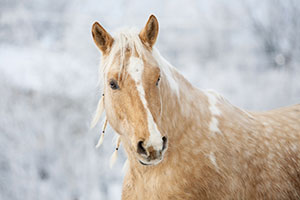
The New Year marks a birthday for many horses. For young horses being older is generally a welcomed thing and usually doesn't require any lifestyle changes, but for the senior horse one more year can be a big deal.
“Things like mobility, body condition, and digestion can really change in twelve months, especially for the super senior horse that is over 21,” says Laurie Cerny, editor of www.equineseniors.com
Cerny recommends that owners honestly assess their senior horses in two main areas: feed requirements and exercise/usability. They should also resolve to embrace moderation in the related assessed outcomes.
“When it comes to feed and supplements you can’t expect your horse will need and/or eat the same way they did at 15- now that they’re older,” she said. “In my experience with our older senior horses they get pickier with their hay. They also tend to sift supplements or NSAIDs (Nonsteroidal anti-inflammatory drug) from their grain rations.”
Read more: New Year’s Resolutions for the Senior Horse Owner
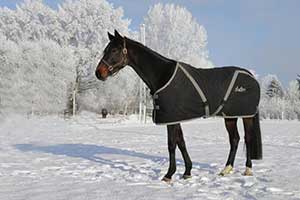
Dr. Eleanor Kellon, Staff Veterinary Specialist for Uckele Health & Nutrition
It happens every winter. A horse that may not even have a prior history of laminitis is found to be very lame and reluctant to move. It's more than the typical hesitation horses show on hard, frozen ground. Looks like laminitis but the feet aren't hot. What's going on?
Cold-induced hoof pain strikes horses with insulin resistance. IR is a well described risk factor for laminitis, but even when horse is not glaringly lame it is causing damage to the laminae. We haven't uncovered all the mechanisms behind laminar damage from high insulin levels, but one known factor is elevated levels of endothelin-1.
Endothelin-1 is a peptide (small protein) produced by the cells lining the interior of blood vessels. It is the most potent vasoconstrictor known and is normally balanced by production of the vasodilating chemical nitric oxide. Cold-induced reduction in blood supply to the hoof when superimposed on the pre-existing high endotheli-1 activity may explain why some IR horses develop hoof pain in cold weather, but normal horses do not.
Cold stress may also cause insulin to rise. Insulin resistance is part of the metabolic adaptation to cold weather in several species. Researchers have also noted insulin levels become erratic in horses in cooler weather.

by Heather Wallace
Stall rest is not something equestrians ever want for their horse. Horses do best, physically and emotionally, when constantly moving. So the prospect of weeks or even months in a 12x12 stall is enough to cause us stress as well. The trick is keeping our horse calm during stall rest.
Complications of Stall Rest
While stall rest due to injury is sometimes a necessity, it is usually because the positives outweigh the negatives. What are some complications that can occur due to stall rest?
1.Inflammatory Airway Disease (IAD)
Inflammatory Airway Disease (IAD) can occur from prolonged exposure to environmental particulates dispersed from feed, bedding, or footing. This can cause inflammation and increased mucus production. The last thing we want is for our horses to get a secondary problem. Wetting the footing and soaking hay and feed is a good way to reduce dust and air particles.
Read more: Keeping Your Horse Calm Naturally During Stall Rest
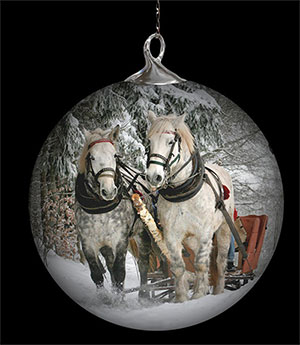
by Bonnie Marlewski-Probert
Excerpted from her book, The Family Pet Treat Cookbook available at horsetalesforthesoul.com. More than 175 healthy recipes that are sure to please all the cats, dogs and equines in your life!
The holidays are upon us. A time of year filled with peace, love, good friends and your favorite holiday goodies. While you are busy baking your favorite holiday cookies, don’t forget your horses! We’ve included three of our favorite holiday goodies from The Family Pet Treat Cookbook which includes healthy, all-natural goodies for all the felines, canines and equines in your life.
If your barn is hosting a pot luck dinner, why not bring a dessert dish for the horses using one of our fun recipes below. Or, consider making holiday stockings for each horse in your barn and stuffing them with healthy treats. Remember that all treats should be fed to your horses in moderation, a lesson we could all stand to learn especially around the holidays!
Peppermint Pony Treats
2 cups flour
1 cup oats
1/4 cup molasses
10 crushed peppermints
2 apples
Preheat oven to 350 degrees.
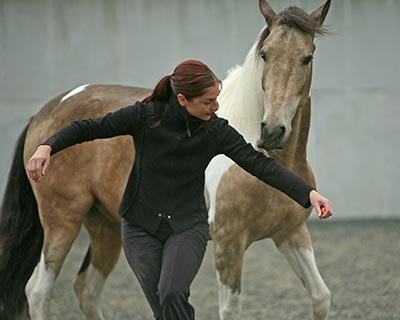
by Paula Josa-Jones
One of my teachers, the horseman Mark Rashid, is a black belt Aikido master and guides his students from the perspective that riding, like Aikido, is hard because you have to change yourself, and that it works well if you get yourself right. Through my life as a dancer and a choreographer—and a horsewoman—I’ve discovered how body-mind practices can help you get yourself right, so that when you are with your horse, you can listen to him and approach him from a place of generous and good intention, as well as an active awareness of what and how we are communicating from moment to moment.
Learning to connect with horses in this way teaches us how to develop our inner selves, become more comfortable in our own skin, be more trustworthy to ourselves and others, and gain greater skill, sensitivity, and resilience in social communication. This benefits our personal and work lives, sometimes in profound ways. Horses can help soften physical resistance and open wells of enthusiasm and creativity. Horses can help us learn that losing and finding balance is an integral part of life’s dance. That we can, like surfers, find, lose, and re-find balance on the crests and troughs of even the biggest waves, the most turbulent emotional and physical waters. They can help us to release our fears, our hesitancy, and become comfortable “on the edge,” where answers and inspiration arise spontaneously from an open, curious, and attentive mind and body.
Read more: How “Let’s Do It!” Can Change Your Horse Business…and Your Horse
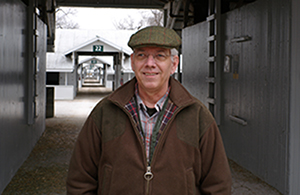
By Marion E. Altieri for EIE
The National Science Foundation (NSF) doesn't give out grant money for research in the arena of animal health very often. Most of the millions of dollars that they distribute are allocated for studies in sciences, including medicine, that will benefit human health and welfare. Lexington equine veterinarian, Dr. David Nash, saw a need in horse health, and set forth to design and deliver PathTracker. The device has the potential to change not only equine health practice, but the future of human medicine, as well.
Dr. Nash and his team of scientists and engineers' PathTracker is a breakthrough so visionary, so insightful, that indeed the possibilities cross between the worlds of equine health and the future of allopathic medicine for humans. This is the sort of research and product that, 50 years ago, was envisioned only by Gene Roddenberry when first he conceived of the Universe through his own imagination via "Star Trek." (Tricorders in "Trek," used for communication and scanning patients for disease, became our smartphones and now—now have developed into Dr. Nash's PathTracker.)
The NSF received the grant application for PathTracker, and saw that this great work will move human medicine forward by leaps and bounds—and thereby granted the team a three-year grant in the amount of $999,950. The figure is astronomical—but the NSF recognizes that this project is not static, rather will advance science in ways that even the inventors may not realize yet. That which began as an advancement in equine medicine will one day become a lifesaver for thousands of humans, all around the world.
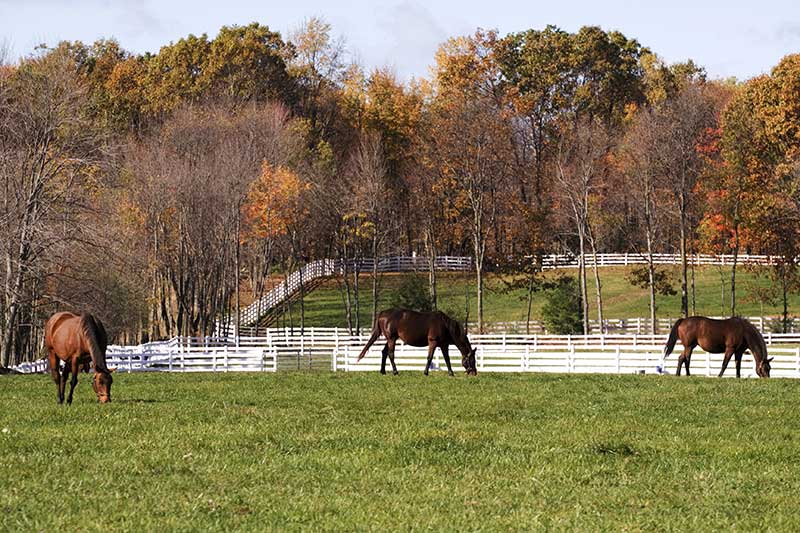
Administer booster vaccinations and target deworming treatments to help protect your horse’s health.
With fall here, it is important that you help protect your horse from emerging risks, such as equine influenza virus, equine herpesvirus (EHV) and parasites.
“If you have a horse that travels for fun or competition, it’s recommended that he be vaccinated twice a year against equine influenza and equine herpesvirus to help boost his immunity,” said Kevin Hankins, DVM, senior veterinarian, Equine Technical Services for Zoetis. “For horses at increased risk, I always suggest they booster Fluvac Innovator in the fall.”
While annual spring vaccinations help offer disease protection and can activate an immune response, the American Association of Equine Practitioners (AAEP) vaccination guidelines recommend at-risk horses be vaccinated for equine influenza and equine herpesvirus, also called rhinopneumonitis, every six months.1
How do you know whether your horse is considered at risk? Key disease risk factors include:
- Younger than 6 years old
- Older than 15 years old
- Stabled in boarding barns
- Traveling off-property or housed with horses that do
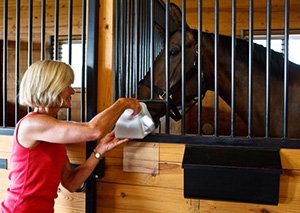
The best place to start supporting your Insulin Resistance (IR) horse is a low sugar and starch diet with a balanced intake of key minerals. Minerals have direct and indirect involvement in virtually every action in the body, and have important effects on IR and its consequences. IR is different in the horse than in the human, but the same basic principles apply, which is evidence of activated antioxidant defenses in the tissues of IR horses.
Building the horse’s own antioxidant basic defenses is most effective. This includes the SOD, catalase and glutathione peroxidase enzyme systems, as well as the antioxidants glutathione, CoQ10, carotenoids and vitamin A, flavanoids, and vitamins E and C. Glutathione is particularly widely distributed.
SOD absolutely requires copper and zinc. Catalase requires iron, which is not an issue as the typical equine diet supplies plenty of iron.
Glutathione activity depends on Selenium, a very common deficiency. Selenium is also essential for the generation of the active form of thyroid hormone, T3, from T4.
Zinc is a commonly deficient mineral. Low serum Zinc is associated with IR and type 2 diabetes in humans and rats. Supplementation of Zinc supports defenses against type 2 diabetes in rat models. Exactly why has not been determined. It is known that Zinc is important on several levels, involved in insulin release and sensitivity as well as being an antioxidant in SOD.
Read more: The Effect of Minerals on the Insulin Resistance (IR) Horse
- Texas’ Horseback Emergency Response Team: Helping Hands and Horse, in the (Literal) Trenches
- What You Need to Know: Equine Leg Bandaging
- Quick Tips: Q&A: Controlling Parasites in Horses
- EIE Exclusive Interview with Heather Kitching of Angrove Stud, UK, Home of the Tobiano Racehorse
- In Hot Pursuit of Thoroughbred and Quarter Horse High Colors
- Spring Grass Safety - A Review
- Must-Haves for Your Equine First-Aid Kit
- Tracking Down the Tobiano Legend
- Orphan Foals: Success is Possible
- Health, Horses, Healing and Hippocrates
- Broodmare Nutrition During Late Gestation
- ‘Anonymous Horses’: Kill Pen Rescues Come With Serious Health Risks
- Introducing the Rare, Colorful and Beautiful Knabstrupper Breed
- Horse Speak: The Equine-Human Translation Guide
- A Breed from the Appalachian Mountains, Introducing the Mountain Pleasure Horse!
- UHC Gelding Clinics 2017
- Walkaloosa Horses and Their Colorful Coats
- The Morgan Horse: America's First Breed
- Big, Black and Beautiful! The History of the Majestic Friesian Horse
- Unwanted Horse Coalition Releases New Operation Gelding Program Policies for 2017












































